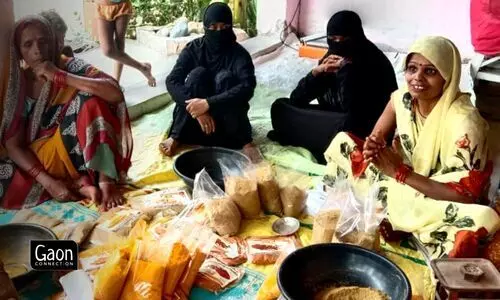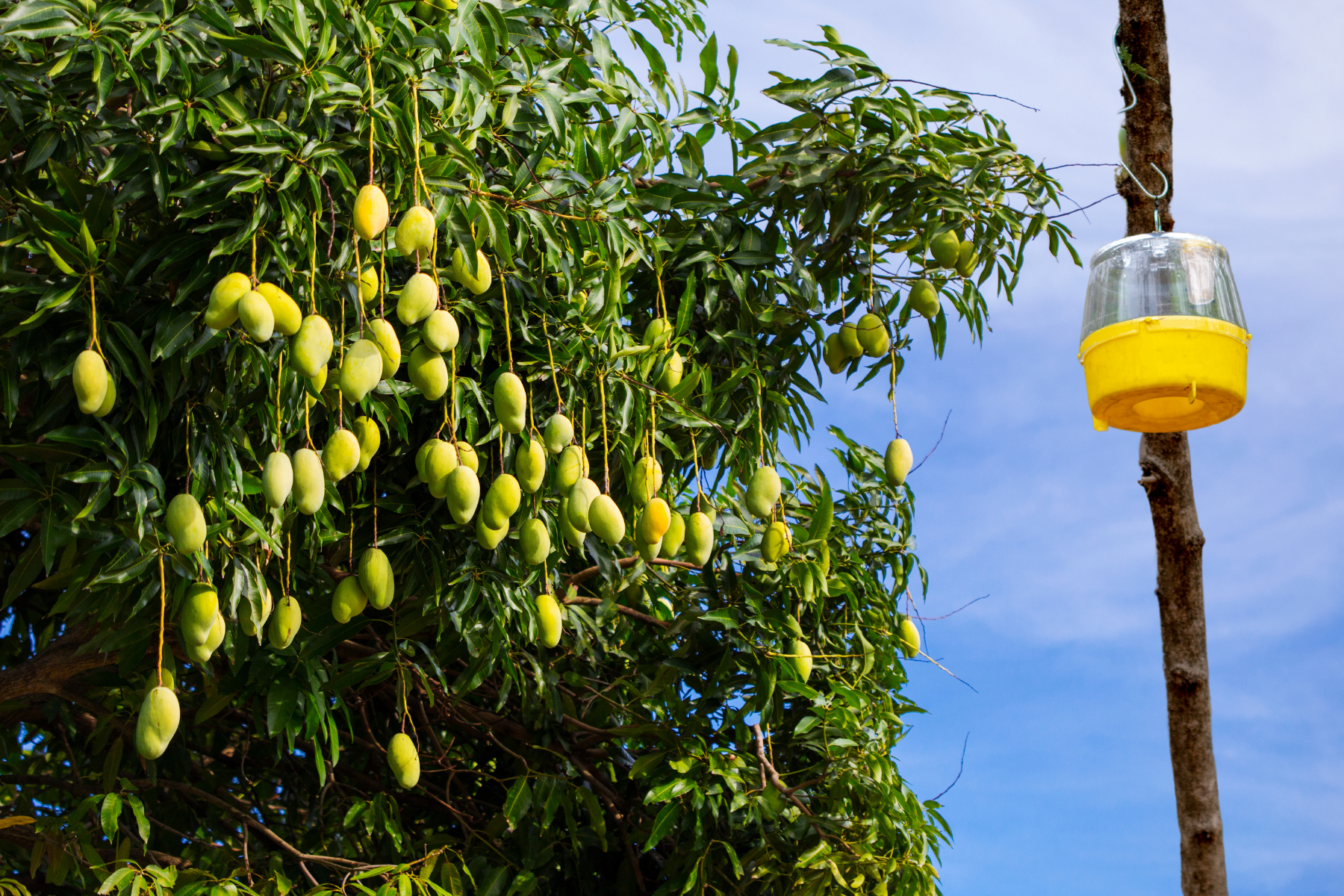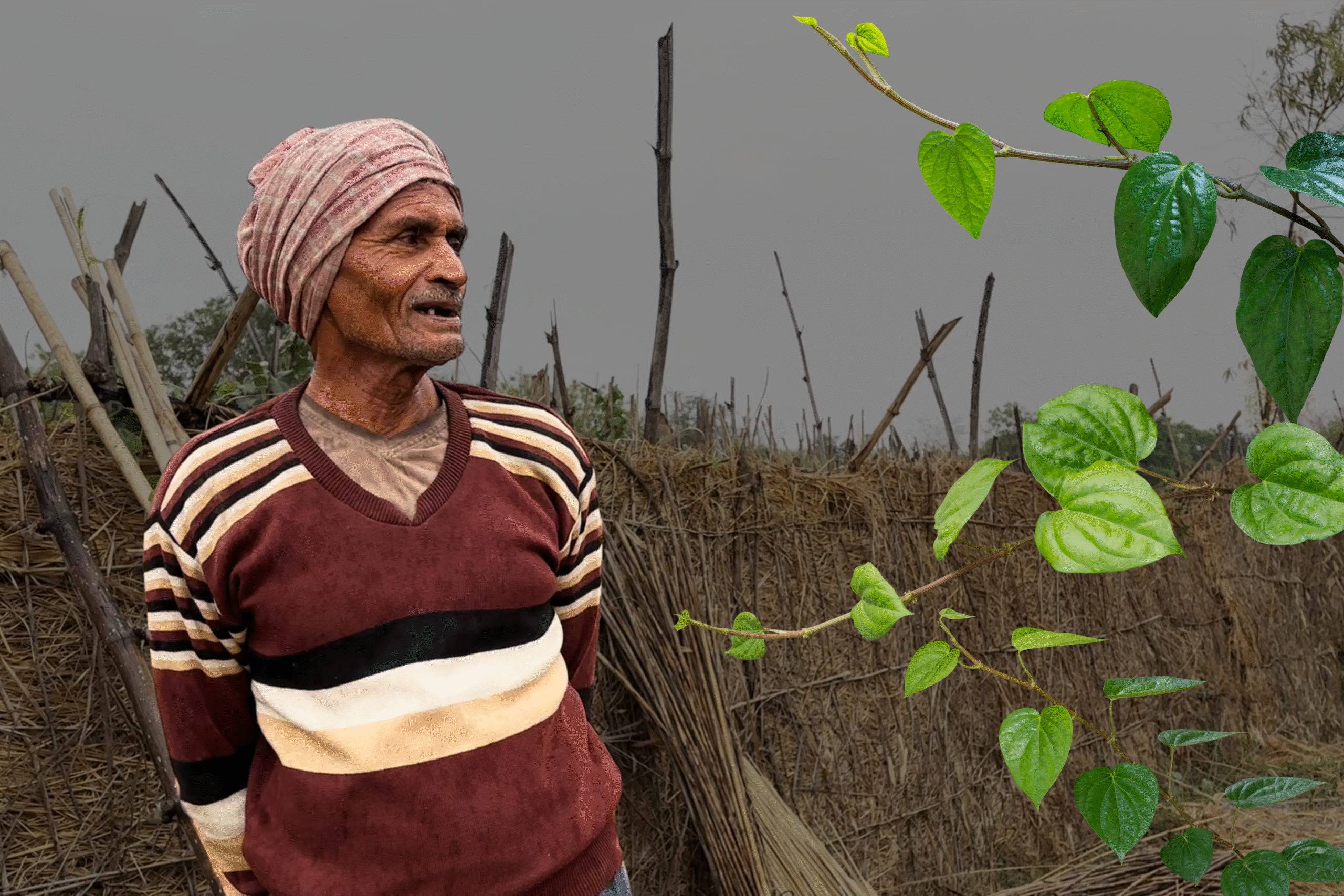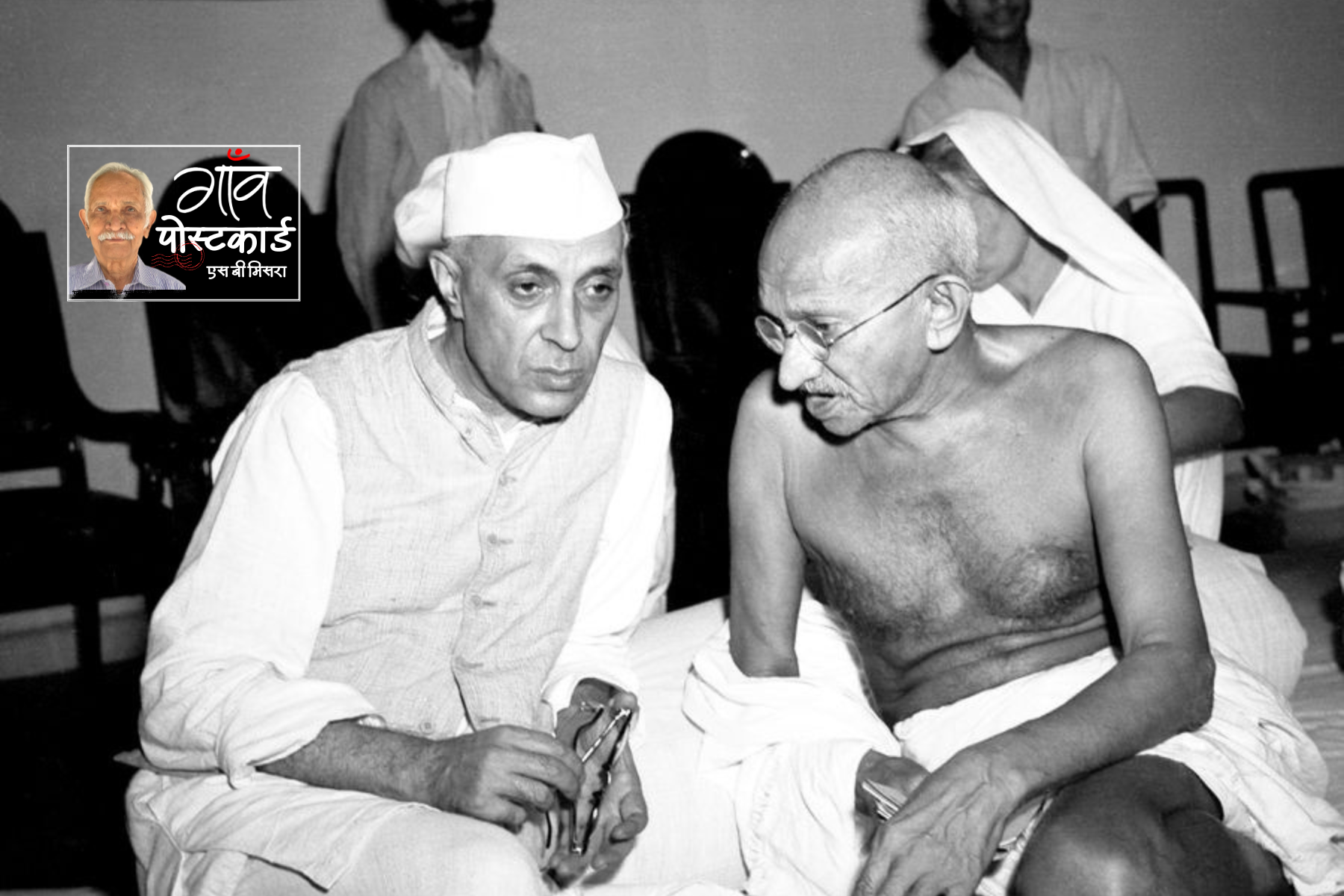Sitapur, Uttar Pradesh
The fragrance of turmeric, chilli and coriander powder is unmistakable as one approaches an enclosed tin shed in Goriya village, which falls in Rampur Mathura block in Sitapur district.
About five to ten women sit around mounds of the powdered spices, measuring and packing the powders into packets that will be delivered to the many small shops in their own village and other nearby ones.
“A few of us from the village got together last year in June, and we formed a samooh that we named Maa Bhavani Mahila Swayam Sahayta Samooh,” Rupa Devi, director of the women self help group (SHG), told Gaon Connection.
The women deftly scoop up katoris of the masalas and put them into packets. Many of these will find their way to nearly 400 schools in the two blocks of Rampur Mathura and Mahmudabad in Sitapur.
Also Read: Women Led Balinee Milk Producer Company Revolutionises Dairy Business in Bundelkhand
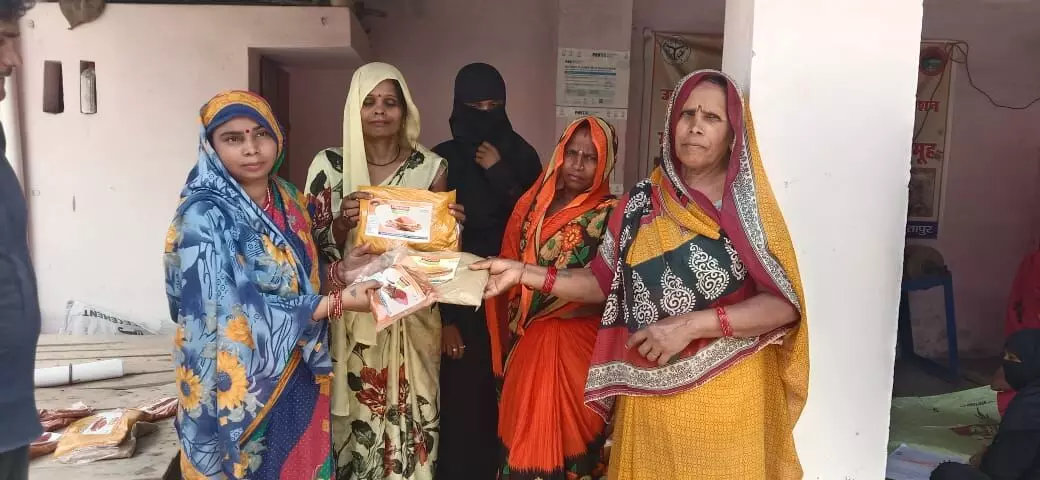
These women are set to supply their masalas to nearly 400 schools for preparing the midday meals.
“The primary and secondary schools, numbering about 400, will use our masala for the midday meals they serve the children,” Rupa Devi added with pride. Akshat Varma, the chief development officer of Sitapur, has directed the SHG to supply the chilli, turmeric and coriander powder to all the schools in the two blocks.
This has galvanised the women into action and their production has gone up manifold. According to Rupa Devi, when they began last year, the five or six women who were members of the SHG made only about five to 10 kgs of powder a month. “Now we make anything up to six quintals a month,” she said. Usually, they make a total of a little more than six quintals (1 quintal = 100 kgs).
The SHG was given a fund of Rs 110,000 by the government. “The women of the SHG have used this grant well,” Sushil Kumar Srivastav, the district coordinator for National Rural Livelihoods Mission (NRLN), told Gaon Connection. “Supplying these masalas to schools will not only increase their earnings, but also ensure that children eat meals that are cooked with the clean, unadulterated spices these women make,” he added.
A humble beginning
In the beginning the handful of women pooled whatever little resources they had and began making the turmeric, chilli and coriander powder in really small quantities, which they then sold in 50 to 100 grams packets to the village shops. To their surprise, the demand for their masala grew in their village.
“Soon we also began supplying to other villages close by, and more women joined our samooh,” Sangeeta Devi, another SHG member from Goriya, told Gaon Connection. They began to participate in fairs and exhibitions in the block where they began putting up a stall for their ware, and told people about their enterprise.
“While earlier we sold our spices in small five and 10 gram packets, we now prepare 250 grams to half kilo packets. Before, we made no more than Rs 300 a month. Now each of us makes the same amount, that is three to four hundred rupees, per day,” Sangeeta Devi told Gaon Connection with pride.
Chillies, coriander and to a lesser extent turmeric is cultivated in Sitapur and it was the obvious choice to use these ingredients that were available in plenty to make masalas out of.
“Wherever and whenever we can we buy directly from the farmers and if we fall short, we buy the raw ingredients from the market,” Renu Devi, an SHG member, told Gaon Connection. The quantity of spices varies month to month depending on the demand. But, according to Rupa Devi, whatever they spend in buying the raw materials they make a 15 per cent profit every month.
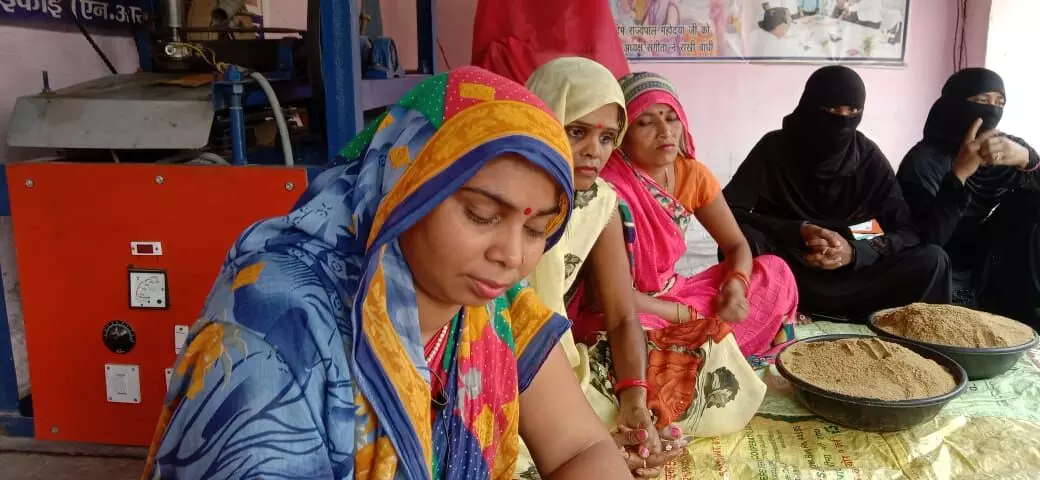
The women deftly scoop up katoris of the masalas and put them into packets.
Spreading the business
In the beginning the women hand pounded the spices. But when the demand for their spices grew, the women bought a chakki (mill) and now work it in shifts.
The women dry the spices on their terraces and courtyards and then take it to a common place where they powder them in a chakki.
“We worked as farm labourers to augment our household income, but that work was hard and sporadic,” Shakila Banu, told Gaon Connection. Being in the SHG allowed her to work on her own time and it was a regular source of income. “We sit under a roof cleaning and packing our masalas, instead of being out there in the scorching sun doing back breaking work for a pittance,” she added. According to her, their masala has also reached the neighbouring district of Barabanki!
“Not having to depend on our menfolk for every paisa, and instead supporting the family with money we have earned ourselves is a good feeling,” smiled Sangeeta Devi.
“We are appreciative of the tremendous hard work the women of this SHG are putting in and they have achieved so much in just over a year,” Srivastava said. “The next thing we want to help them do is to replace the plastic covers they are using and substitute those with cloth or some other eco-friendly alternative. That will take some time. Once they start making more profits, they will do it,” he added.
Also Read: Prerna Canteen Run by Rural Women in Lalitpur Sets an Example of Self-Reliance

